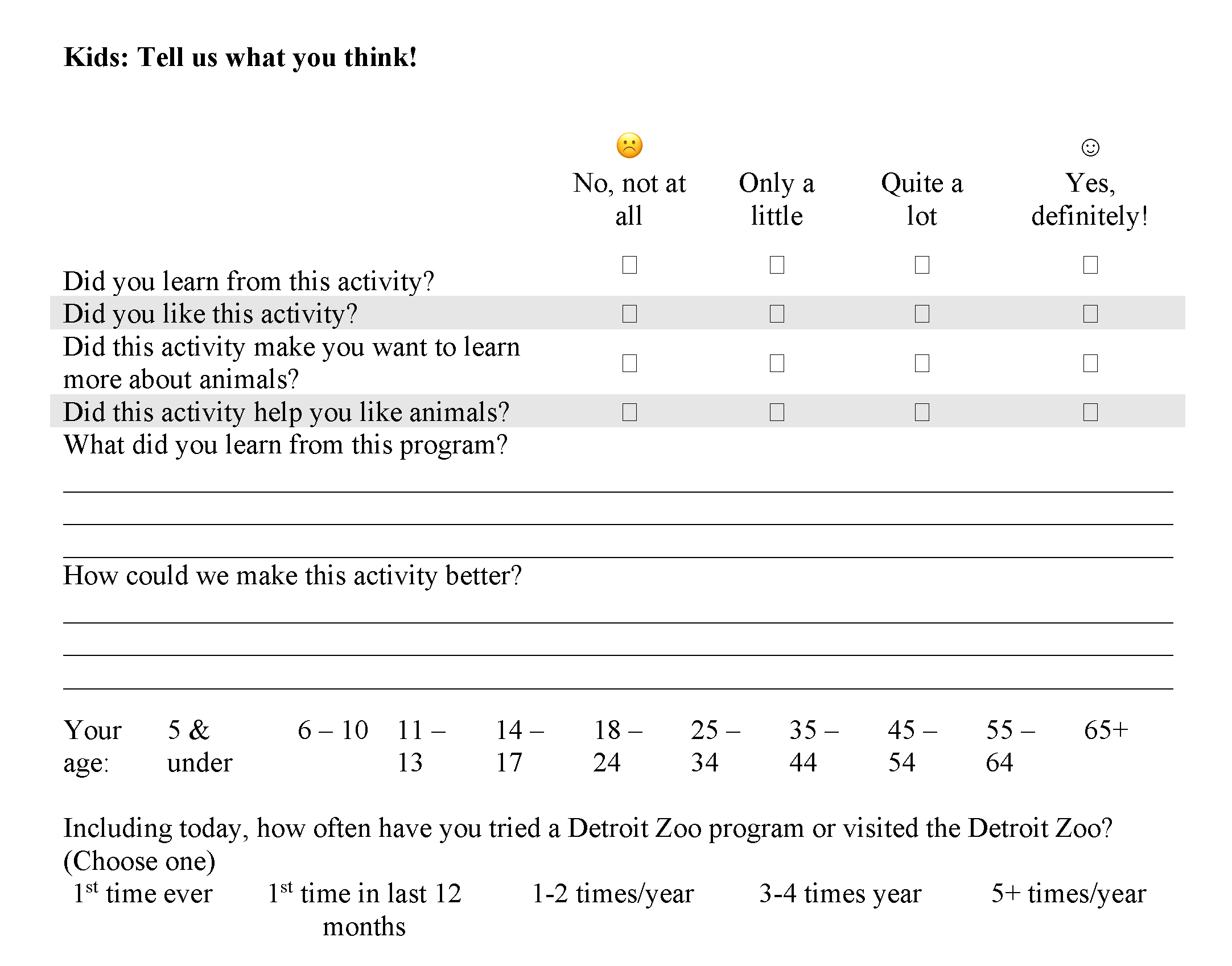Feature
Celebrate Urban Backyards
Building Community Relations Through Nature
Connected Science Learning October-December 2018 (Volume 1, Issue 8)
By Claire Lannoye-Hall and Zahraa Aljebori

Find out how the Detroit Zoological Society partnered with local organizations to create Celebrate Urban Backyards, which engages afterschool educators and students in hands-on, inquiry-based programs and activities focused on their urban environments.
Science literacy starts with enthusiastic role models and access to engaging experiences. When youth find science exciting and accessible, it opens gateways to future careers and courses of study (Tai et al. 2006). While science in the classroom is essential, afterschool programs can provide students with an opportunity to explore science concepts in depth, work with peers in a social setting, and make connections across their learning experiences (Afterschool Alliance 2015).
In 2014 the Detroit Zoological Society (DZS) collaborated with the Association of Science-Technology Centers (ASTC), among several other informal science institutions and community-based organizations around the country, on a National Science Foundation (NSF) Division of Research on Learning grant. Principal Investigators for the grant are the Cornell Lab of Ornithology, ASTC, and associates from the Garibay Group. The NSF grant supports research on factors that influence implementation of programs for culturally diverse participation in informal science, with a goal of providing informal science organizations with more effective engagement methods. Organizations often collaborate on programs without addressing contextual factors, such as operational, cultural, economic and demographic variables, that could make it a more beneficial program for all parties involved, resulting in a short-term or unfinished partnership. The grant provides the opportunity for organizations to fully explore the potential of partnerships and document the successes and challenges along the way.
One of the DZS’s partner organizations is the Arab Community Center for Economic and Social Services (ACCESS), a community-based organization located in Dearborn, Michigan. ACCESS facilitates afterschool programming in 25 locations in the Dearborn area through a Michigan Department of Education initiative to support schools with low academic achievement. School staff refer students to the afterschool program; all of the students are underperforming by at least two grade levels. The DZS and ACCESS had worked together on episodic programming in the past, but a long-term relationship had yet to develop. The NSF grant allowed the two organizations to cultivate a more robust partnership, while exploring ways to best meet both of their needs in the process.
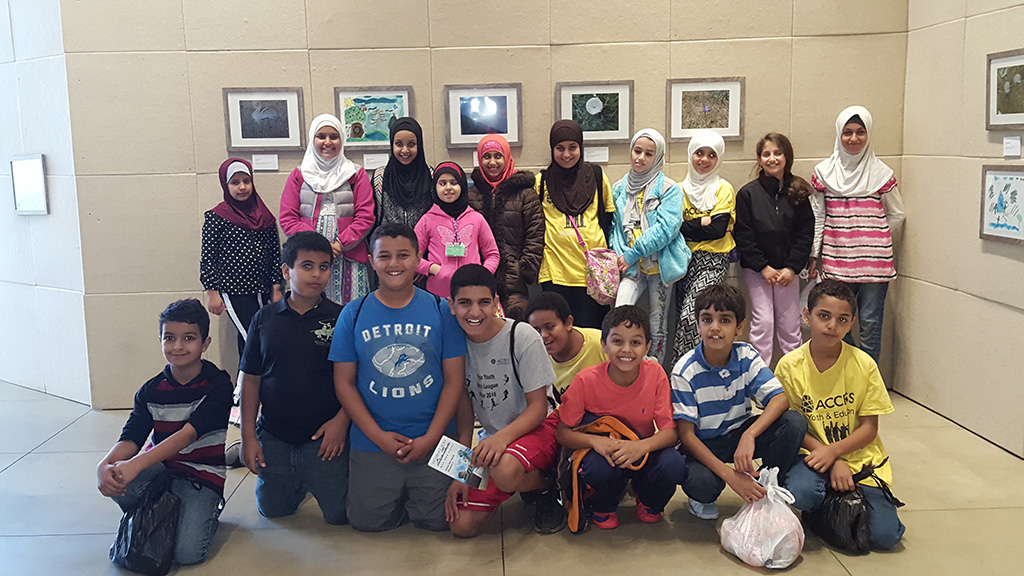
Grant Year 1: Building a partnership
The DZS hired Zahraa Aljebori as a part-time education specialist to be the point person for the project. She was instrumental in finding and creating activities to generate excitement about science concepts. Zahraa remains heavily involved in program implementation, acting as a liaison with ACCESS for meetings, planning, and professional development. Leadership from the education departments of both organizations continue to meet regularly to address the programming, logistics, and responsibilities of both organizations. These meetings allow both organizations to shift their focus toward building a mutually beneficial relationship that extends past the four-year grant period.
Working with an organization deeply entrenched in the Arab-American community gave the DZS an opportunity to get to know a local community on a deeper level. Staff at ACCESS identified the Salina Intermediate School as an ideal site for a pilot program. More than half of the students in the afterschool program come from households of first- or second generation immigrants and have varying comfort levels with speaking English. The program allows them to practice English in a safe environment, while providing an opportunity to share their acquired knowledge of birds through media, such as art and photography. Located in the hub of Dearborn’s industrial district, students at this school have limited green space to use to establish connections between what they learn in the classroom and their environment. The program emphasizes a foundational understanding of science that goes beyond memorizing vocabulary and major concepts often missed in their classrooms by using textbook/kit lab experiments. The program works at each student’s pace to help him or her transition from merely knowing concepts to understanding them. This empowers students to see themselves as scientists through hands-on experiments, project-based learning, and citizen science.
Grant Year 2: Programming begins
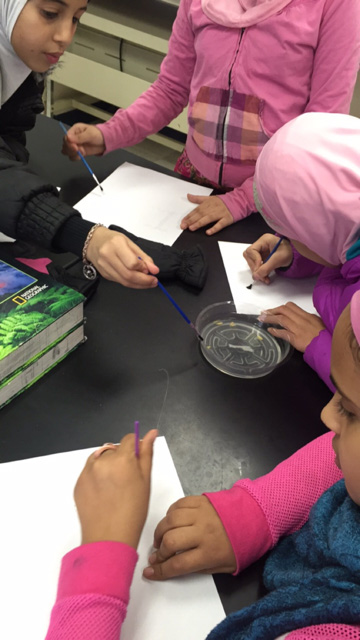
For eight weeks, DZS staff visited Salina Intermediate twice a week to work with their students in grades 4 to 6. This introductory period helped DZS staff form a relationship with ACCESS staff through coteaching a series of hands-on activities demonstrating key scientific concepts. Students made lava lamps one week and invisible ink another, to see what chemical and physical changes looked like in the physical world. They explored states of matter through water play, and they explored energy by using different vegetables as the power source for lightbulbs. Throughout this process, DZS staff assessed and adjusted programming to match the pace of the students and afterschool instructors.
As the students developed greater interest in and comfort with science concepts, staff introduced art activities to create a deeper connection between students and the natural world while simultaneously building observation skills. A local artist provided a drawing workshop, demonstrating how basic shapes, such as circles and triangles, become complex images and evolve into sparrows and crows. The students also worked with a local photographer who taught them the basics of camera operation and macrophotography. Assignments ranged from taking as many photos as possible, to finding and photographing a certain subject in nature. The photographer offered tips and additional assistance while the students practiced. For many students, this was their first time operating a camera. Final works depicted subjects such as spider webs, dewdrops on blades of grass, and dandelions growing in cracked cement. The Detroit Zoo curated an exhibit of the students’ artwork for the community to enjoy in 2016. The exhibit is currently available for public viewing at the Belle Isle Nature Center. A tertiary location in the community is being scheduled for exhibition in the future.
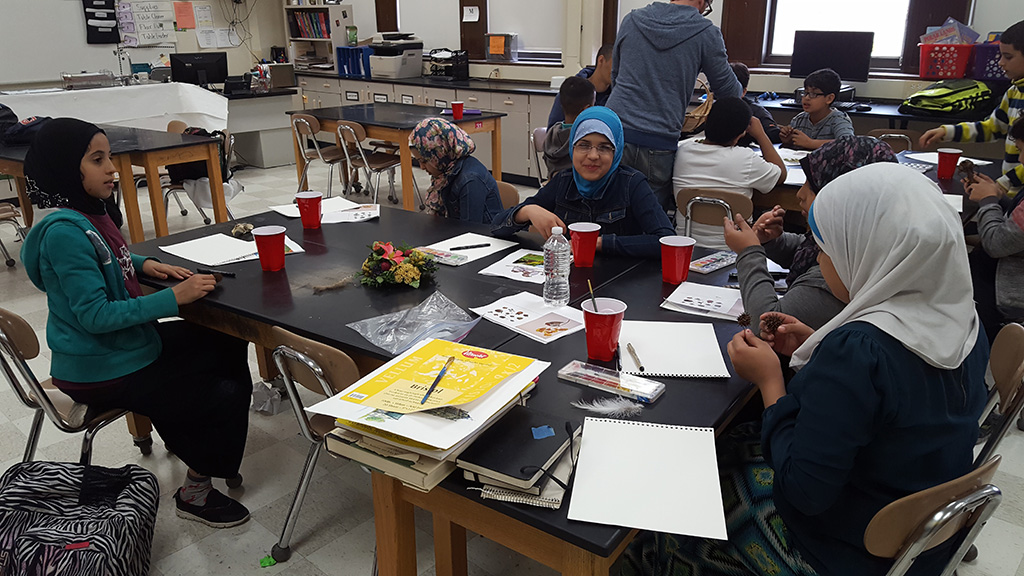
Students also gathered data for the Cornell Lab of Ornithology’s Celebrate Urban Birds (CUB) citizen science project. The students observed 16 different bird species: the American crow, American robin, Baltimore oriole, barn swallow, black-crowned night-heron, brown-headed cowbird, Bullock’s oriole, cedar waxwing, European starling, house finch, house sparrow, killdeer, mallard, mourning dove, peregrine falcon, and rock pigeon. Through a series of activities that incorporated both art and science, the students learned to identify the 16 focal species by sight and sound so they could watch for the birds in a consistent, measured area for 10 minutes. During this time, students practiced scientific procedures such as observation skills and drawing conclusions about their environment. Though students struggled with the disappointment of scarce bird sightings, the staff at Cornell framed the importance of reporting that only a single species or no birds at all were being observed. Students learned that knowing where birds are not found was valuable to researchers and residents alike. The data can point to issues such as urbanization or pollution that affect both wildlife and people, and influences people to be the driving force toward change.
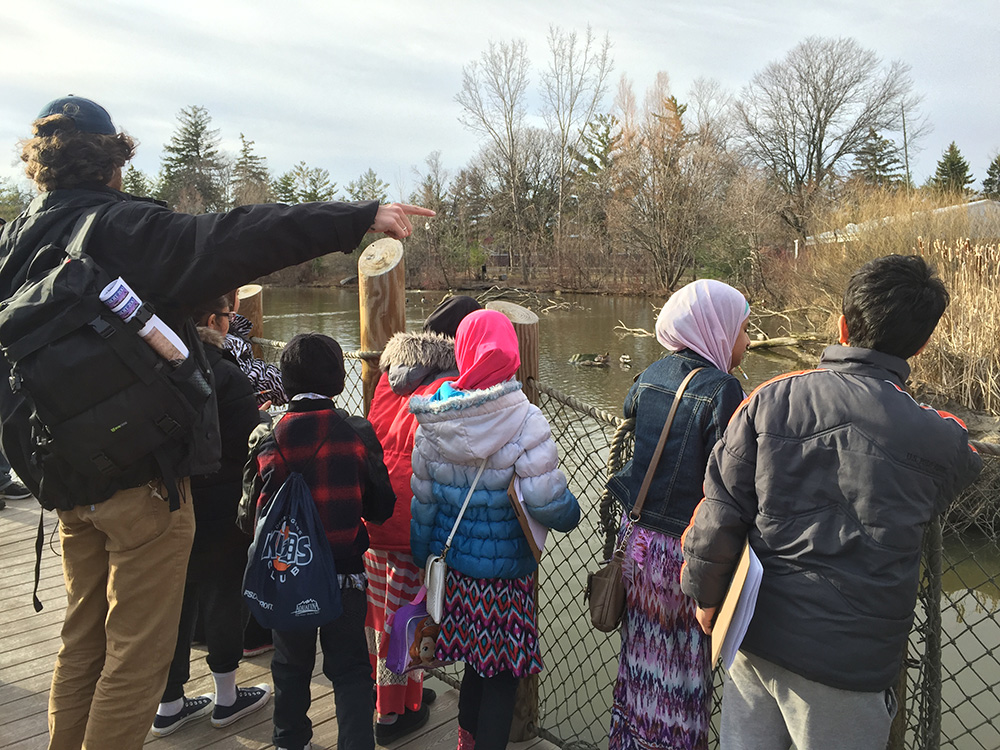
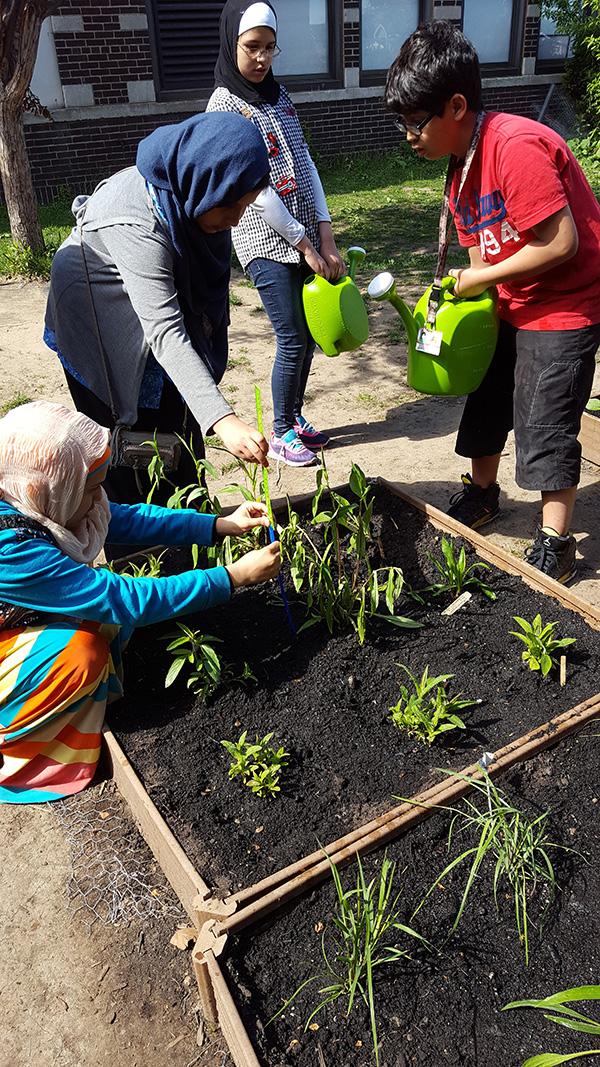
A total of 14 observations were submitted to the Celebrate Urban Birds online portal, totaling 10 rock pigeons, six American robins, six house finches, and five American crows. The students’ data prompted them to question how they could improve their schoolyard to attract more species of birds. They decided to create a wildlife-friendly habitat in an unused courtyard on their school grounds. The students cleaned the site, built raised beds to combat poor drainage in the space, and researched native plant species that birds rely on for food and shelter. Bird feeders and birdbaths were also included. Although the improvements did not attract any new species of birds, they caused a notable increase in the total number of birds seen around the school. The students compared the number of birds seen in the courtyard to the number of birds seen at the front of the school, an area that was mostly lawn, to measure the impact of their garden. The data indicated that more birds and pollinators visited the improved courtyard compared to the front of the school. Students noticed that the variety of species seen in their garden was twice what they saw at the front of the school and noted insect species they had not previously seen at either location.
Summer camp programming
An expansion of Celebrate Urban Birds was piloted with three ACCESS summer campsites, modeled after the program at Salina Intermediate School. ACCESS camp staff, many of whom had also been afterschool program staff, led the lessons with support from DZS staff, who visited one of the two sessions each week. The DZS staff created material-heavy kits focused on birds in general, not just local species. As the summer progressed, it became evident there was not enough time allotted for students to build interest in and familiarity with the topic. While the staff and students from the afterschool program at Salina were invested in the lessons, the same did not hold true for participants at the other two sites. The summer camp staff struggled, having not had enough time to master the material before attempting to teach it to students. By the end of the eight weeks, it was clear that the kits needed to be explicitly designed for students and staff who have had limited exposure to outdoor learning.
Grant Year 3: Programming expands
The following school year, the program expanded beyond Celebrate Urban Birds to Celebrate Urban Backyards, encompassing the full variety of wildlife that can be found in urban environments in the metro Detroit area. The expansion reflected the students’ interests from the previous school year, as well as the DZS’s mission of celebrating and saving wildlife. The DZS education team redeveloped the summer camp kits into a series of lesson plans (Celebrate Urban Birds 2016) to introduce outdoor learning to the incoming group of afterschool educators and students.
The lessons only require materials that can easily be found in classrooms and schoolyards, so that students and afterschool facilitators can familiarize themselves with the outdoors at their own pace. The lessons include six different open-inquiry periods throughout the school year, in which students explore materials found in nature, such as rocks, feathers, and leaves, in ways they find appealing. The afterschool facilitators and DZS staff met prior to the school year to explore materials together, through inquiry-based exploration. The DZS staff modeled questioning strategies and reflection throughout the training session. Students also participated in several citizen science projects, providing information to Cornell and Journey North among others.
Table 1. Celebrate Urban Backyards Afterschool Discovery Kits
| Activity | Notes | Pertinent links |
|---|---|---|
| Color Scavenger Hunt | Students compare colors from paint swatches to living and nonliving things in their neighborhood. | |
| Leaf Inquiry | Students practice making observations and developing investigable questions. | NSTA Learning Center |
| Pinecone Inquiry | Students practice making observations, developing investigable questions and planning/conducting an investigation. | NSTA Learning Center |
| Bird Beaks | Students observe and compare several different types of bird beaks, focusing on adaptations. | birdsleuth.org/beaks |
| Tulips | Students explore tulip bulbs, then plant them, reporting their garden to Journey North. | journeynorth.org/tulips |
Evaluation
Student evaluations and interviews have signaled strong interest in continuing the partnership and the program. Regular classroom teachers as well as the afterschool staff have reported noticing students’ increased interest and engagement in the sciences. One teacher noted that “the way [the students] interact with the outdoors is different than the way they used to.” Another commented, “It’s so great that the kids get a chance to work on something so impactful. It brings science to life and changes their perceptions.” As a whole, students have transitioned from passive to active participants in their classes. Some parents have also commented on their child’s increased engagement in school. A parent shared this comment on a program survey:
“We had an exhibit at the Detroit Zoo, and it was an exhibit of the students’ work, and [the program staff] were able to plan an event where the children invited their parents to the exhibit which was held at the Zoo. So it was a nice kind of two-generational thing that we were doing; the kids got to show off what they were working on, the parents got to see the tangible results of what their kids had been involved in. It was an opportunity to get the families out to the Detroit Zoo. And it was a really, really nice collaboration, not just between the two organizations, but also with the families and their children.”
A staff member from Salina shared that her students went from “not wanting to go outside to caring about the outdoors.”
Perhaps most importantly, the students themselves expressed that they enjoyed the program. Over the course of the program, Zoo staff collected 171 completed survey cards from students at the end of each session. (see sample below). Students were asked to rate their level of agreement with a series of four statements on a four-point scale, where 1 indicates “No, not at all” and 4 indicates “Yes, definitely.” These surveys included four rating questions to measure participants’ knowledge gain, enjoyment, interest, and attitude toward animals in response to the program. The combined total of these four measures make up a program’s impact score. The average impact score of the CUBs sessions was 12.4, out of a possible score of 16. Respondents reported high levels of learning and enjoyment. To the questions “Did you learn from this activity?” and “Did you like this activity?” three in four students responded “Quite a lot” or “Yes, definitely!” A majority of respondents also rated the attitude and interest measures highly. Two in three students responded to the question “Did this activity help you like animals?” with ratings of 3 or 4. Three in five students responded with ratings of 3 or 4 to the question “Did this activity make you want to learn more about animals?”
Students expanded on their ratings with additional comments. Many comments were about content from that week’s activity, including what they learned about birds’ beaks, feathers, flight, migration, and sight. A few students made connections to nature more generally, such as, “You can help the animals” and “I learned even grass is a living thing.” One student shared how education and enjoyment had intersected for them: “I learned that you can learn while having fun.”
When asked about Celebrate Urban Backyards, one student said, “It’s awesome being here and [it] lets you have more time with your friends and you learn more. In science, we learn about birds and math. We learn about fractions and everything we’re doing in class too, so it helps us with class.” Another student called Celebrate Urban Backyards “a good experiment” and expressed that they found activities like “taking turns measuring the data” to be “awesome and interesting.” Exposing students to wildlife in their neighborhoods connects them to their environments and lets students develop respect for nature. One student shared that birds were important to her because she enjoys “hearing the birds chirping in the morning,” which “really gets [her] joys up.” Working with students long-term and asking them to collect and share data with scientists has shown to help build self-confidence. When a boy was asked why he thought his school was chosen for CUB, he replied, “Because we’re smart.” Staff who work with students throughout the day noted increased confidence in students’ abilities: “The benefit to the youth is obvious in terms of they have been able to do things that they normally don’t do. They’ve changed their vision of their school and the places that they’re at. … If we do happen to be outside, not bird-watching, doing something else, they’re really alert to “that’s a bird, that’s a sparrow, that’s—” and it’s not knowledge that’s necessary, it’s not like they need to know these 16 birds. Knowing that they have that knowledge for them is a big deal. They feel like they really know stuff that other people don’t know and it empowers them.”
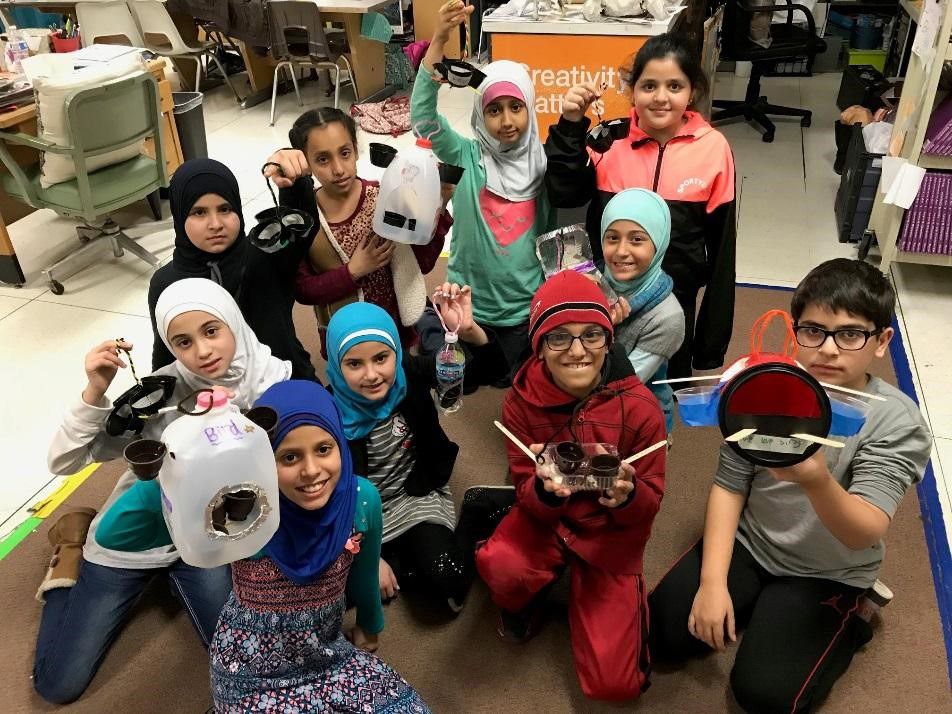
Successes and challenges
DZS staff originally developed programming with minimal input from the afterschool staff at ACCESS. This was due to conflicting work time schedules, afterschool staff transitioning between roles and locations, and some hiring challenges. As the DZS team worked to transition program facilitation primarily to ACCESS afterschool staff, professional development workshops were difficult to schedule. When workshops were held, time was abbreviated, as ACCESS scheduled these workshops into their staff orientations and trainings. With limited time available to prepare the afterschool staff to be successful, content was not thoroughly explained, leaving facilitators uncomfortable with teaching some of the material. During a visit to the summer session, afterschool staff amended lessons with content-heavy videos and handouts to supplement their inexperience with teaching the content and the program lost its focus and was no longer accessible to the students. Consistency also came up as an issue when some of the afterschool teaching staff with ACCESS left and new staff were hired, causing challenges in creating institutional knowledge.
Based on the challenges in implementing the first round of programming, the DZS staff have already put in place plans to co-develop activities at upcoming planning meetings with ACCESS staff. DZS staff have planned schedules that give all of the DZS educators the opportunity to co-facilitate programming with the ACCESS staff, ensuring program longevity and featuring the skill sets that the DZS team has to offer. Both organizations continue to be patient with each other for inevitable staffing changes and timeline shifts.
Timelines, organizational goals and priorities, resource management, and cultural differences require open and constant communication to ensure everyone stays consistent and productive. Without the grant funding and structure, creating a meaningful relationship would have been infinitely more challenging. The grant provided a timeline for meetings and check-ins, co-written reports, and evaluation processes. Even with all these pieces in place, the program stayed confined to a core group of individuals at each organization. Having a point person dedicated to communicating between the organizations and staying on an agreed upon timeline is crucial. Involving as many people as possible, on all levels and from both organizations, ensures longevity and strengthens the quality of the program through diverse opinions and input. The collaboration needs to be an investment for all involved.
Conclusions and future plans
Working across organizations is critical but challenging. Pairing informal science learning organizations with community-based organizations connects audiences that are traditionally underserved in STEM with experts in the field, while providing the informal learning organizations opportunities to share their mission and resources with a wider audience. Both the DZS and ACCESS remain committed to working together, which has led to the submission of a new proposal to focus on watershed education as well as a renewed commitment to increasing the reach of how programming is co-created and implemented. ACCESS staff and students continue to focus on increasing their environmental awareness and stewardship through citizen science projects, data collection, documented observations, and arts programming. A 2018 grant from the National Oceanic and Atmospheric Administration is providing funding for the DZS and ACCESS to continue working together, using the existing partnership to expand and include Bay-Watershed Education and Training (B-WET) and Meaningful Watershed Educational Experiences (MWEEs). Early program planning has included additional DZS staff to increase their comfort level of working with watershed content and students in ACCESS’s afterschool program, as well as prototyping the project for distribution to additional out-of-school time programs. Science literacy is crucial for youth to have unlimited opportunities for future careers and fields of study. When informal learning organizations and community-based organizations partner, youth, staff, and the community benefit from the opportunity to work together.
Acknowledgment
This project was funded by National Science Foundation grant DRL-1421788.
Claire Lannoye-Hall (clannoyehall@dzs.org) is a curator of education at the Detroit Zoological Society in Royal Oak, Michigan. Zahraa Aljebori (zaljebori@dzs.org) is an education specialist at the Detroit Zoological Society in Royal Oak, Michigan.
Citizen Science Environmental Science Informal Education



